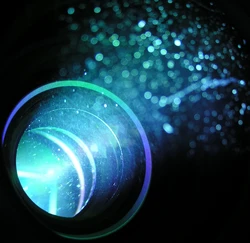

Aren’t most miners running ASICs that are pretty much only useful for mining specific coins? I was hoping we were past the last “people are buying off-the-shelves GPUs for crypto” bubble.


Aren’t most miners running ASICs that are pretty much only useful for mining specific coins? I was hoping we were past the last “people are buying off-the-shelves GPUs for crypto” bubble.


Make something unmarketsble.
My big hobby project was software for 30-year-old computers, not a big market.

I always figured they should have gone towards custom architecture as a product.
This would have dovetailed well with the Itanium-driven extinction of a lot of high-end architectures. If you can get one more generational upgrade for some bespoke platform running MIPS or M88k or whatever, you might pay $10k per chip instead of conpeting with commodity x86.


I run the Windows build on Lutris just fine. You might have to cut the network for a few seconds during the launch (after you press “start game” in the launcher, before it loads the title screen)


On a high level, you can get a cleaner like Deoxit D5 in a spray bottle. Most pots have a slit in them so you can spray into them, then turn the pot through its range a bunch of times. It’s worth a try as a start. Obviously do it while the unit is unplugged.
If you want to consider a more aggressive rebuild, like a capacitor replacement, maybe find a cheap old amplifier at the thrift shop to use as practice for desoldering/resoldering.
You might be able to connect the BT to one input on the amp, like the tape input, and the CD to another.


The Orville has a great take on it too.
There’s an episode where they bring in someone from a scarcity-era planet and she’s freaking out about how they have replicators and future medical tech, and the crew explains to her that if the technology were airdropped on her world, thry wouldn’t be socially ready for it and it would just become a means of further stratification.


I see a Roadmaster wagon. To the used-games store!


Some mainboards have very few PCI-e slots.
I ended up with a similar adapter because the onboard SATA on my board was flaky with optical drives and I rip CDs.


From what I understand, some modern drives effectively encrypt everything at rest, but have the key on file internally so it decrypts transparently. This allows for a fast “wipe” where it just destroys the key instead of having to overwrite terabytes.


It’s fun. I saw it in the weird $3.50 cutrate cinema the local real estate tycoon runs as hobby business and there were like 9 people in the hall.
We have an entire universe (from snaps up to univere-scale k8s setups) derived from “it works on my machine, so we’ll ship my machine”.
How much bad software isn’t being shook out because it’s kept alive in a container with just the right dependencies to prevent it from activating bugs and bad assertions?

This again?
Was it ever determined if the first story on this was stock manioulation, bevaude it felt a lot like stock manipulation.


A Greaseweazle mihht be another angle; you could image discs at lest.

At this point Wayland is basically “winning” because of sunk cost. Just because X11 is the wrong answer doesn’t make Wayland the right one.
We could stop and say “here’s what we learned was problematic from both X11 and Wayland and how people actually use computers in 2025, how would we solve these problems knowing that?” But then we’d have to start again from square 1, and nobody with the clout to make it happen is pushing for that.


I want to see the camera that will stop white-collar crime.


I ended up with two hubs. One sits on top of the desk mostly for transient devices, and one is taped to the bottom of the desk for semi-permanent devices. Then there’s only two cables to the machine.


And the tendency to provide numerous m.2 slots.
Give me an x4 slot and I can slide a m.2 adaptor in, but if it goes the other way, it’s only by way of a janky hacky mess.


I’m surprised there isn’t more of a crowdsourced solution-- community maintained block/allow lists and pluggable tools.
Part of the reason filters suck right now is that they’re sold to turboprudes and people pushing compliance solutions that will placate litigious turboprudes. So you get blocking all of Wikipedia and .edu/.gov because three pages have an anatomical diagram of a breast. The kids are frustrated, normal parents have to keep unblocking legit stuff, and nobody wins.
If you could pick from easily managed lists sponsored by groups you personally trusted, with responsive appeals systems, people might be more willing to use them.
The ad-blocker ecosystem has a lot of precedent for how to work this stuff.


We need to reframe the discussion from “it’s for the children” to “it’s for lazy parents”.
People are keen to scapegoat parents, and here it’s the truth. They don’t want to use existing opt-in controls, or put the damn computer where they can keep an eye on Little Timmy while he uses it. Make the entirery of the legal system do it for you!
Microsoft was probably the only firm with the resources to keep a Chromium fork current while uneinding Google’s enshittifications. But their incentives are too similar for that.